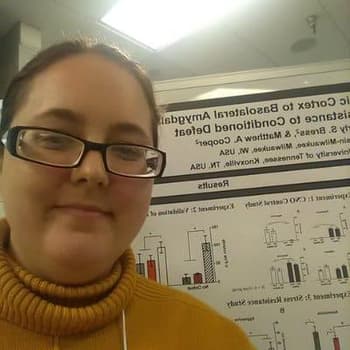Methamphetamine (meth) is an illicit psychostimulant drug whose abuse has created an international public health crisis. In fact, meth use statistics indicate that it is the second most abused drug in the world (after marijuana). The effects of meth include feelings of euphoria, hypersexuality, decreased anxiety and increased energy. People who use meth excessively or chronically might also experience anxiety, depression, aggressiveness, social isolation, psychosis, mood disturbances, and psychomotor dysfunction. Additionally, this drug can cause cell death in important areas of the brain critical for decision making, attention and more.
Meth use in Washington State and Oregon also poses a significant public health crisis. For instance, meth use-implicated deaths within Washington state have been steadily rising for the last 25 years. In Portland, Oregon, police report a steady increase in the amount of meth seized in the past three years. How do these numbers from Washington, as well as Oregon, break down though?
Methamphetamine Use by the Numbers
Methamphetamine use differs based on demographic characteristics in the state of Washington and Oregon. Factors that influence methamphetamine use include:
- Age: In the state of Washington, the average age of those who died from meth ranged from 39.5 to 46 years old, although about a quarter of meth users were under the age of 30.
- Sex: In the state of Washington, the percent of deaths (and overall meth use) among men was the largest; women only made up 25.8%-34.9% of deaths.
- Race/Ethnicity: In the state of Washington, although Whites had the highest total number of deaths due to meth (as well as overall meth use), Native Americans death were grossly over-represented. To illustrate, Native Americans make up 1.9% of the population of Washington but were between 3.6%-7.2% of deaths from 2003-2016.
- Socioeconomic status: In Washington, people with lower income were more likely to be abusers of meth. For instance, in 2016, legal income of meth users had an average of $454 a month. Further, 32% of users in Washington were homeless.
Contributing Factors to Current Trends
Why are these numbers break down the way they do? There are many contributing factors. Take the issues of homelessness, for instance. Homelessness is high among meth users and these users contribute their use due (partially at least) to the appetite suppressant and stimulant effects of methamphetamine.

It's time to get your life back.
If you are struggling with addiction and co-occurring mental health, our expert team is here to guide you every step of the way. Don’t wait— reach out today to take the first step toward taking control of your life.
To further illustrate factors of meth and homelessness, homeless people often feel vulnerable to violence at night, and they perceive meth as protective by keeping them awake. Generally, though, other meth users report that they use meth because of the so-called “positive” effects of the drug such as relieving depression, increasing energy and productivity, and weight loss. However, it is important to keep in mind that these “positive” effects are often transient and lead to worse problems later as meth use continues.
Another fact that has contributed to these large numbers is the ease of access to meth. The flow of meth from Mexico to the United States has continued to increase over the years. In Oregon, most law enforcement officers surveyed in 2019 (86%) indicated that meth was highly available in their area, with nearly 40% of those surveyed reporting increased availability compared to previous years. Furthermore, this increased availability and amount of meth in the region has driven prices down. Low prices lead to more drug consumption.
Washington State and Oregon Meth Deaths
Statistics on meth deaths in Washington and Oregon are alarming. From 2008 to 2016, the rate of meth deaths per year quadrupled in the state of Washington to 5.1 people per 100,000. This trend has been steadily increasing over the years and is likely to continue rising if earlier intervention programs are put into place. In Oregon, meth deaths constitute the highest number of overdoses compared to other drugs. In fact, fatalities connected to meth reached a historic high of 272 total people in 2018, a rate that is 400% higher than it was in 2009.
Counties with the Highest Number of Overdose Deaths
In the state of Washington, Spokane county contributes to the overall highest number of overdose deaths. In Oregon, Multnomah County had 171 methamphetamine-related overdose deaths since from 2013-2017, which was the most in the state, according to Oregon Health Administration.
Meth-Related Crime Statistics
In Washington State, police reports indicate that meth is a major drug of abuse and is associated with substantial levels of property crime. Furthermore, this drug takes up substantial law enforcement resources compared to other illicit drugs. In Oregon, the majority of law enforcement agencies list meth as their greatest drug threat. Additionally, these law enforcement agencies report that meth is the drug that contributes most to violent crime, while it is also the drug responsible for most property crimes. It would appear that meth crimes, in both states, are likely to property crimes.
Meth Lab Data & Impact on the Environment
The state of Washington State, in the past at least, has had a high incidence of meth labs found in homes, barns, sheds, motels and in the woods. However, rates seem to be declining since tighter restrictions have been placed on some of the meth chemical precursors. For instance, in Washington, the number of meth labs cleaned up by the Washington State Department of Ecology peaked at 1,890 cases in 2001 and dropped to 184 by 2008. In Oregon, the number of lab busts went from 473 in 2003 to 12 in 2009.
Meth is made from household items that are commonly available at local stores, such as supermarkets or hardware stores. When these ingredients are”cooked” to produce the drug, they generate chemical waste. This waste is typically dumped down the drain but may be stored, buried, or dumped elsewhere on the property. It is in this way that meth labs can also devastate the local environment. Meth manufacturing byproducts, after they are dumped, can easily find their way into the soil, water, and air.
The Cost of Meth Addiction
Meth comes with quite a cost. The cost of meth addiction occurs on many levels, from the individual to the entire country. At the individual level, meth causes both physical and psychological harm to people. Meth is particularly hard on the brain; the drug is actually toxic at a cellular level. Meth also harms an individual’s community.
From local property crime to the environmental impact of meth production, this drug harms the community. The effects of meth are also observed at the state and federal level, as money is needed for law enforcement as well as some rehabilitation programs.
Trends in Methamphetamine Treatment Admissions
Meth rehab statistics indicate that people do want to seek treatment. In 2017, meth received the second-highest mention to Washington State drug rehab helplines, with 861 calls. Meth admissions to drug rehab centers in the state of Washington increased substantially in 2017 to 136, a substantial increase from 2011 when there were only 22.
Among those who do seek treatment, a higher proportion female compared to everyone else has been noted. Meth treatment admissions seem to be on the rise in the state of Washington; in line with this, in one survey within the state of Washington, almost half (47%) of meth users were very or somewhat interested in reducing or stopping their illicit drug use.
Meth Relapse Statistics
Unfortunately, meth relapse statistics indicate that just over 60% of meth users will relapse within a year after they begin the recovery process. Meth recovery can be considered a lifelong process, with relapse occurring as a natural part of the long-term recovery process. This is why continued treatment, such as psychological counseling, is so important.
Other Drug Trends in the Pacific Northwest
There are a few other drug trends in the Pacific Northwest that are worth noting. First, cocaine use and cocaine-associated deaths has remained, more or less, the same over the last decade. If anything, cocaine use is at an all-time low. Marijuana abuse has also decreased over the years. However, statistics indicate that more people are seeking treatment for opioids than before.
If you or someone you love is struggling with methamphetamine addiction, know that you are not alone. Help is available from The Recovery Village. Contact us today to learn more about our personalized and confidential services geared towards drug addiction that are available in the Pacific Northwest.



